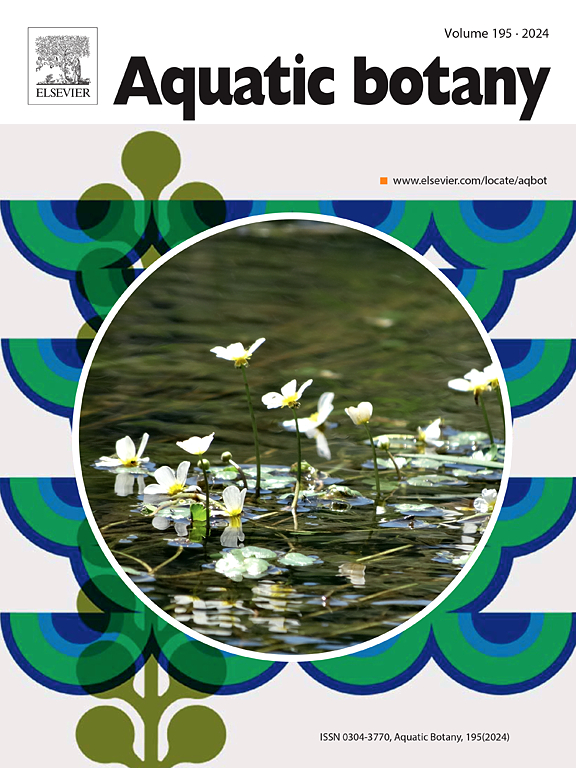水生植物蓝藻和变异毛藻对镍的耐受性和植物修复潜力
IF 2.6
4区 生物学
Q2 MARINE & FRESHWATER BIOLOGY
引用次数: 0
摘要
水生保护的主要威胁之一是重金属污染,其中镍(Ni)是最重要的污染物之一。研究了维管束植物lena minuta和蓝藻trichorus variabilis对Ni污染水体的耐受性和修复潜力。硫酸镍(NiSO4·7 H2O)的植物毒性作用6.47 mg/L),暴露7 d和14 d后,通过测量形态变化、生长(鲜重)和关键生理参数(叶绿素、丙二醛、蛋白质含量和过氧化氢酶活性)进行评估。通过测定培养基中Ni浓度的降低量,比较了单种和混合种对L. minuta和T. variabilis去除Ni的能力。镍暴露对两种植物均有毒害作用,表现为鲜重、叶绿素和蛋白质含量降低,丙二醛含量和过氧化氢酶活性增加。与群体相比,这些影响在单一培养中更为明显,特别是在变异链球菌中。Lemna minuta表现出良好的耐镍性和修复能力,在7和14天后分别从溶液中去除75 %和86 %的金属。在相同的暴露时间后,变异毛虫分别去除36 %和27 %的Ni。联合体表现出较高的Ni去除率,在7天和14天后分别达到80 %和90 %,但这与L. minuta单一培养没有统计学差异。这些结果表明了L. minuta在修复ni污染水体中的潜力,并表明联合可能提高这两种物种在ni胁迫下的耐受性和生存能力。本文章由计算机程序翻译,如有差异,请以英文原文为准。
Nickel tolerance and phytoremediation potential of the aquatic plant Lemna minuta and the cyanobacterium Trichormus variabilis in monoculture and consortium
One of the main threats to aquatic conservation is heavy metal pollution, with nickel (Ni) among the most significant contaminants. The Ni tolerance and remediation potential of Lemna minuta (vascular plant) and Trichormus variabilis (cyanobacterium) in contaminated water were investigated. The phytotoxic effects of nickel sulfate (NiSO4·7 H2O; 6.47 mg/L) on these two species, were assessed after 7- and 14-days exposure by measuring morphological changes, growth (fresh weight) and key physiological parameters (chlorophyll, malondialdehyde, protein content and catalase activity). The ability of L. minuta and T. variabilis to remove Ni was compared in both monoculture (single species) and consortium (mixed species) by measuring the reduction in Ni concentration in the culture medium. Nickel exposure induced phytotoxic effects in both species, as shown by decreases in fresh weight, chlorophyll and protein content, and increases in malondialdehyde content and catalase activity. These effects were more pronounced in monocultures, particularly in T. variabilis, compared to consortia. Lemna minuta exhibited good Ni tolerance and remediation capacity, removing 75 % and 86 % of the metal from the solution after 7 and 14 days, respectively. Trichormus variabilis removed 36 % and 27 % of the Ni after the same exposure time. Consortia exhibited high Ni removal, reaching 80 % and 90 % after 7 and 14 days, but this was not statistically different to L. minuta monocultures. These results demonstrate the potential of L. minuta in the remediation of Ni-contaminated waters and suggest that consortia might enhance the tolerance and viability of both species under Ni-stress.
求助全文
通过发布文献求助,成功后即可免费获取论文全文。
去求助
来源期刊

Aquatic Botany
生物-海洋与淡水生物学
CiteScore
3.80
自引率
5.60%
发文量
70
审稿时长
6 months
期刊介绍:
Aquatic Botany offers a platform for papers relevant to a broad international readership on fundamental and applied aspects of marine and freshwater macroscopic plants in a context of ecology or environmental biology. This includes molecular, biochemical and physiological aspects of macroscopic aquatic plants as well as the classification, structure, function, dynamics and ecological interactions in plant-dominated aquatic communities and ecosystems. It is an outlet for papers dealing with research on the consequences of disturbance and stressors (e.g. environmental fluctuations and climate change, pollution, grazing and pathogens), use and management of aquatic plants (plant production and decomposition, commercial harvest, plant control) and the conservation of aquatic plant communities (breeding, transplantation and restoration). Specialized publications on certain rare taxa or papers on aquatic macroscopic plants from under-represented regions in the world can also find their place, subject to editor evaluation. Studies on fungi or microalgae will remain outside the scope of Aquatic Botany.
 求助内容:
求助内容: 应助结果提醒方式:
应助结果提醒方式:


